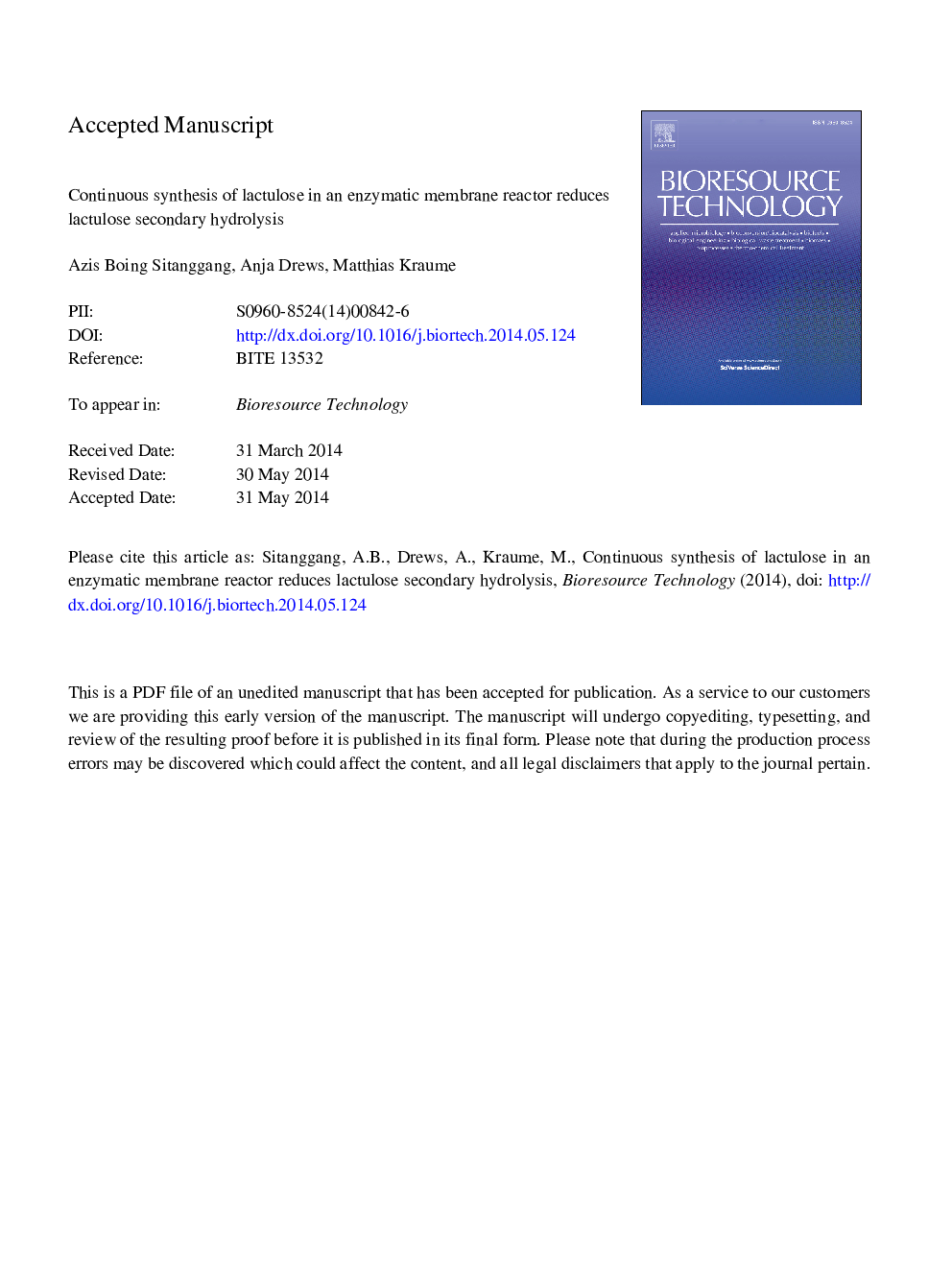| Article ID | Journal | Published Year | Pages | File Type |
|---|---|---|---|---|
| 7076967 | Bioresource Technology | 2014 | 30 Pages |
Abstract
Newly developed parallel small-scale enzymatic membrane reactors (EMRs) were used to enhance the synthesis of lactulose using β-galactosidase. Under batch operation, the productivity of lactulose decreased abruptly from 2.72 down to 0.04 mglactulose/(Uenzymeh) over 35 h of reaction. This was presumably caused by the action of β-galactosidase which performed secondary hydrolysis upon the produced lactulose. The continuous operations of an EMR system led to continuous removal of lactulose in the reactors restricting lactulose degradation caused by secondary hydrolysis. Therefore, continuous lactulose syntheses in the EMRs yielded significantly higher specific productivities under “steady state” conditions. Approximately 0.70 and 0.50 mglactulose/(Uenzymeh) for hydraulic residence times of 5 and 7 h were reached, respectively. Continuous lactulose synthesis performed in an EMR system conclusively can circumvent the drawbacks (e.g., secondary hydrolysis) of lactulose synthesis encountered in batch operation. It is, therefore, beneficial in terms of enhanced lactulose productivity and reduced enzyme consumption.
Related Topics
Physical Sciences and Engineering
Chemical Engineering
Process Chemistry and Technology
Authors
Azis Boing Sitanggang, Anja Drews, Matthias Kraume,
